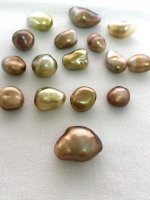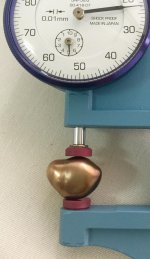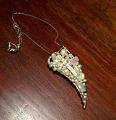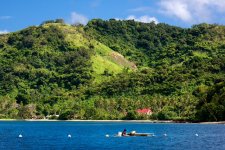Bula guys, I must admit i spent quite a bit of time reading through the Pearl Forum last night. Thoroughly impressed with some of the technical knowledge. I can definitely assist with some insight in what we produce in Fiji and why:
Fiji Oysters are very special.
Oyster supply is Fiji?s greatest constraint, It Is also its greatest asset. The size and nacre color of our oysters are key to our industry, being able to use these unique characteristics gives Fiji Pearls a special niche in the pearling world.
There are 7 different varieties of the ?Black lipped Pearl Oyster? found in the Indo ? Pacific Oceans.
typica: Ryukyus, Taiwan, Australia, Micronesia and Melanesia; cumingi: Cook Islands, French Polynesia; mazalanica: Panama Bay, Baja California; erythraensis: Red Sea; persica: Persian Gulf; zanzibarensis: East Africa, Madagascar, and the Seychelle Islands; galtsoffi: Hawaiian Archipelago. (Sims, 1993; Yukihira, et al., 1999)
In the South Pacific there are two varieties:
1. Pinctada magaritifera cumingi : Known as the Tahitian Black lipped pearl oyster. These are found primarily in the central Pacific Ocean. Characteristics of this oyster is its large size, dark coloration, and huge populations that thrive in atoll environments of French Polynesia.
This oyster is central to Tahitian pearl production.
2. Pinctada magaritifera typica: The oyster is found in the Western islands of the Pacific Ocean. It has a very broad distribution from Fiji / Australia all the way to Southern Japan.
While the cumingi is known as ?the black lipped oyster? the same cannot be said for the typica which often comes in unique body and shell colorations. Note the orange body colour of the photo's of our oysters above.
Typica is also found in relatively low numbers compared to its cousins found in the atoll?s.
Typica is also a smaller oyster then the cumingi.
They have a higher tolerance to suspended particulate matter and can be hound around high island?s.
Research in the 90?s showed that oysters in and around the Fiji group showed an interesting mix in genetics combining both cumingi and typica traits:
Ref: For example, Benzie and Ballment (1994)
Justin?s summary:
Oysters from Great Barrier reef (typica) and those from French Polynesia / Cook islands (cumingi) showed significant genetic variation. While oyster population roughly between these two subspecies of oysters showed a combination of genetics from both these subspecies. Fiji oysters naturally show a unique blend of characteristics not found in other populations.
Research we are involved in, results have shown that there are distinguishable genetic differences between orange and black colour morphs of P. margaritifera. ? Will be confirmed when study is completed.
Basically we don?t have many oysters but we have:
Size that normal typica oyster?s do not.
Colors that are not normally found in cumingi populations.
Combining these two traits we have some pretty special oysters that produce very special pearls.
According to Professor Paul Southgate, a regional expert on sustainable tropical aquaculture at the University of the Sunshine Coast in Queensland, Australia, ?Fiji oysters naturally show a unique blend of characteristics not found in other populations.?
- We have been working with his students for the last couple of years, specifically genetics of our oysters.










